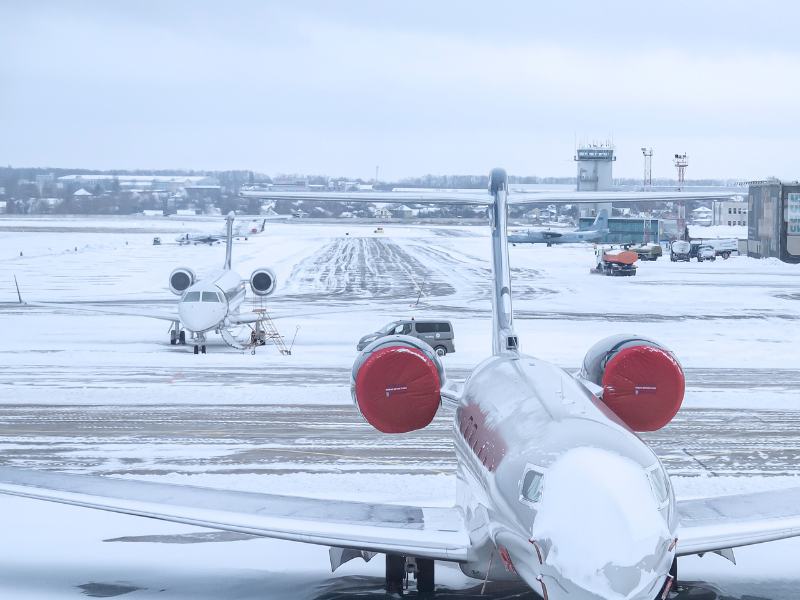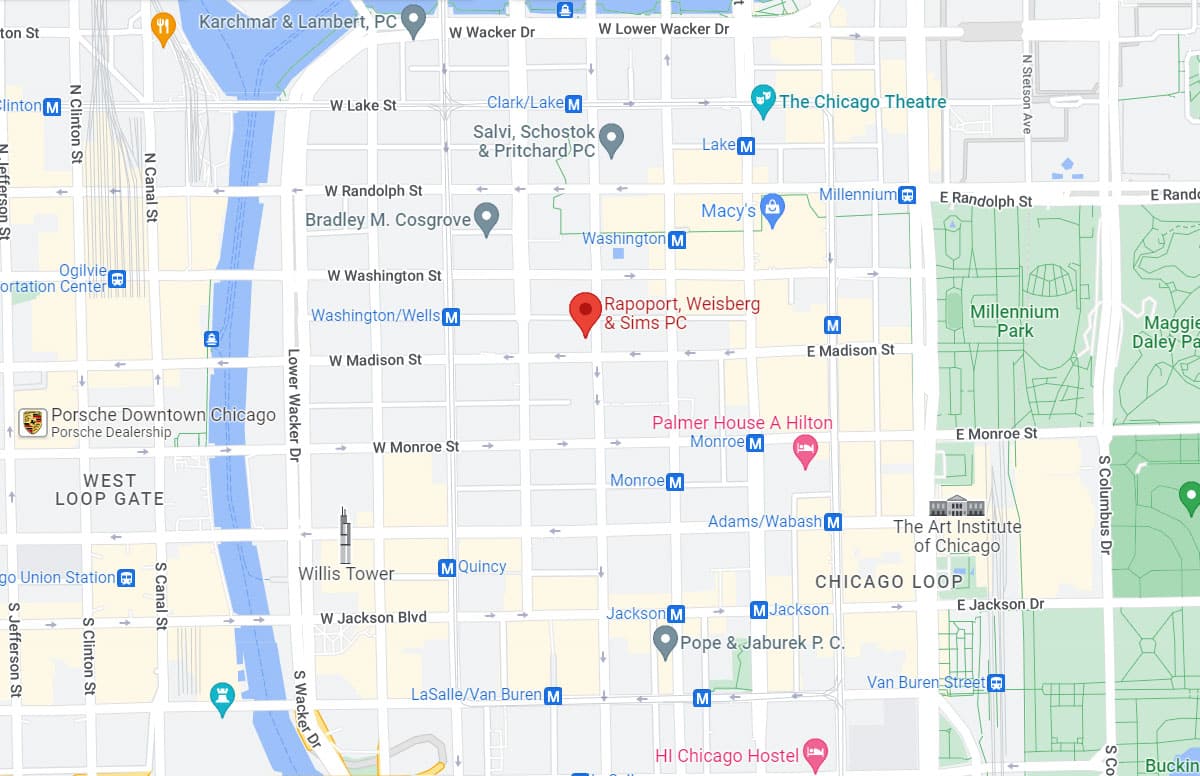Delta Air Lines Flight 4819 out of Minneapolis crashed while landing at Canada’s Toronto Pearson Airport Monday afternoon, February 17, 2025, flipping onto its top and leaving at least 21 passengers injured.

The CRJ900 regional jet, operated by Endeavor Air, was carrying 76 passengers and four crew members at the time of the accident. All 80 people onboard the plane were evacuated. According to Delta, 21 injured passengers were transported to area hospitals for injuries ranging from minor to critical. As of Wednesday morning, 20 of those passengers had been released.
The crash is under investigation by the Transportation Safety Board of Canada, the Federal Aviation Administration, and the National Transportation Safety Board.
What Caused the Delta Plane to Crash?
At this time, the reasons for the Delta flight 4819 crash are unknown. The Transportation Safety Board of Canada (TSB) reports that both black boxes (the cockpit voice recorder and the flight data recorder) have been recovered, however, and they have been sent for further analysis. While investigators evaluate numerous photos and video footage of the accident, people speculate whether pilot error, mechanical malfunctions, weather conditions, or other factors played a role in the crash. As new information emerges, survivors are left injured and waiting for answers.
What We Know About the Plane
The airplane involved in the accident at Toronto Pearson International Airport was a Bombardier CRJ900LR regional jet. It was approximately 16-years-old, and its tail number was N932XJ. The CRJ900LR is a modified version of Bombardier’s CRJ900, and it was designed with a higher maximum takeoff (MTOW) weight and to accommodate longer range flights. The 76-passenger plane has a wing span of 81ft 7in. The plane is 118 ft 11in in length, and the cabin’s diameter is 84in. Two General Electric CF34 turbofan engines powered the plane.
What We Know About the Weather
The days leading up to the plane crash brought extreme weather conditions to the Toronto Pearson International Airport. According to Toronto Pearson President and CEO Deborah Flint, “On Thursday and Sunday, we got more than 20 inches, 50 centimeters of accumulated snow. That is actually not typical. In fact, it is more snow within that time window than we received in all of last winter. There were many delays and cancellations across this part of Canada and the U.S. Northeast during this time, creating numerous flight delays and backlogs.”
Runway conditions at the time of the accident are still under investigation. Although some people have claimed that Monday was a clear day in Toronto, others report that there were harsh wintry conditions with powerful winds, and that snow and ice coated the tarmac. Toronto International Airport Fire Chief Todd Aitken reported that the runway was dry and there were no crosswinds when the plane crashed. However, meteorologists report that visibility in Toronto had been reduced to just 6 miles because of blowing snow when the accident happened. They said temperatures had dropped to 17℉, and there were 40 mph wind gusts. Aviation tracking data from Flightradar24 indicated gusting crosswinds and blowing snow at the time of the crash.
What We Know About the Flight Crew
In an interview with CBS Mornings on Wednesday, Delta CEO Ed Bastian said the flight crew was experienced. He also said the pilots were familiar with the intense winter weather in Toronto. Bastian stated that all the pilots train for these conditions continuously.
What We Know About the Crash Landing in Toronto
Investigators are still reviewing video footage of the accident captured by air traffic controllers. Among other details, the videos show the plane entering the threshold of Runway 23 at Toronto Pearson at approximately 2:13 pm EST. When the plane touched down in a hard landing, it apparently tilted to its right, and the right wing touched the ground and separated from the plane. The aircraft skidded on its side and then flipped over onto its top, losing the other wing and tail fin, and bursting into flames as it came to a rest upside down just off the right side of the runway.
The Delta crash is the fourth major aviation accident that has occurred in North America in 2025.
- On January 29th, American Eagle Flight 5342 collided with a U.S. Army Black Hawk Helicopter over the Potomac River, killing 67 people, including 60 passengers, 4 crew members, and three soldiers. There were no survivors.
- On January 31, 2025, an air ambulance plane crashed in Philadelphia, killing all six people on board and another person who was on the ground. Multiple serious injuries were also reported.
- On February 6, 2025, a small commuter plane crashed in western Alaska. One of the deadliest aviation accidents in the state in 25 years, all 10 people aboard the aircraft lost their lives.
Recovering Compensation for Toronto Plane Crash Injuries
Delta is offering $30,000 to each passenger who was aboard Flight 4819 when it crashed. Delta Care Team representatives are saying that there are no strings attached, and accepting the payout will not affect passengers’ rights. Before agreeing to accept the payout, however, passengers should consult with an experienced aviation accident attorney. Passengers who suffered injuries in the crash landing at Toronto Pearson International Airport may be able to file a claim and recover additional compensation for their losses, regardless of why the accident happened.
Under an international treaty known as the Montreal Convention, passengers may be eligible for certain amounts of damages – without having to prove that Delta was liable for the aviation accident.
The Montreal Convention is an international treaty that governs an airline’s liability for transporting passengers, baggage, and cargo. Both the U.S. and Canada are signatories, and any injury claims arising from the crash landing of Flight 4819 from Minneapolis to Toronto will likely fall under this treaty. Regardless of where passengers file their claims, the treaty ensures a standardized legal process.
Under the Montreal Convention, airlines are held strictly liable for injuries to passengers who are on board the aircraft.
Delta Air Lines will likely liability whether the incident resulted from pilot error, inadequate training, or an operational failure. However, liability may extend beyond the airline. Air traffic control, the airport, the aircraft manufacturer, or any other entity involved with the jet before, during, or after landing may also be held responsible, depending on the findings of the ongoing investigation.
Who Can Recover Compensation for Injuries?
Anyone who was on the flight will likely be able to file a claim for compensation. Although 21 passengers were seen at area hospitals after the crash, many injuries take time to manifest, and it is likely that additional passengers will realize they have injuries in the coming days. This can happen for a couple of reasons. First, when a traumatic event like a plane crash occurs, the human body releases adrenaline into the bloodstream to help the body cope with the situation. As a result, injured victims may experience a reduced ability to feel pain. Second, many types of internal injuries do not show immediate symptoms. When people suffer back injuries, head injuries, or injuries to their internal organs, they may not realize the extent of the injuries for hours, or even days after the incident occurred.
Injured passengers may be entitled to compensation for their medical expenses, lost wages, and pain and suffering.
Since there is generally a two-year statute of limitations for these lawsuits, it is recommended that injured passengers contact an aviation accident attorney as soon as possible to avoid losing their right to take legal action.
Crew members who suffered injuries in the crash may also be entitled to compensation, but their legal options are different from those available to passengers. Workers’ compensation laws prevent crew members from suing the airline directly, but they can file workers’ compensation claims to pay for their medical care and a portion of their lost wages.
If the investigations reveal that fault other than Delta’s contributed to the crash, passengers and crew members may have legal claims against others.
Should You Hire an Aviation Accident Lawyer?
If you suffered injuries in the Delta Flight 4819 crash in Toronto, you should start vetting an experienced aviation accident attorney who will be able to protect your rights. Not all personal injury lawyers are equipped to handle complicated aviation accident cases. Experience matters. Cases like these demand legal representation from attorneys who are familiar with the special rules that pertain only to aircraft accident cases.
At Rapoport Sims Perry & VanOverloop, P.C., our attorneys have more than three decades of experience representing passengers, crew members, and their families in aviation accident cases. Based out of Chicago, we represent clients all over the world. Because of our knowledge, skill, and track record of success, we’re often called upon to act as lead attorneys in cases involving aircraft disasters.

